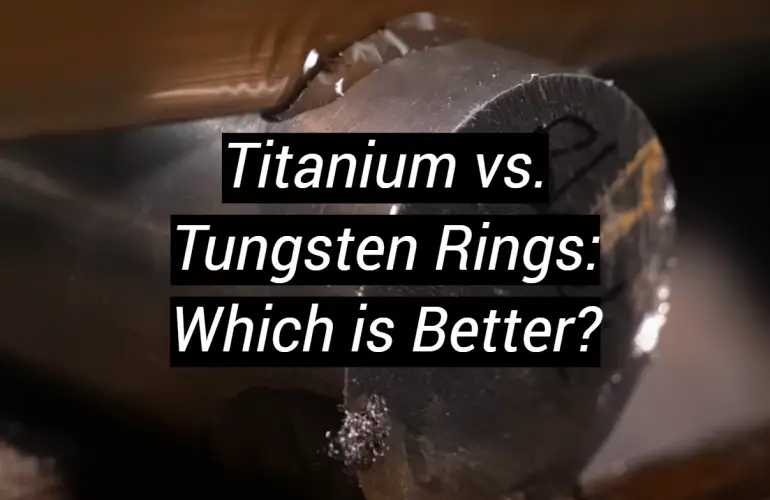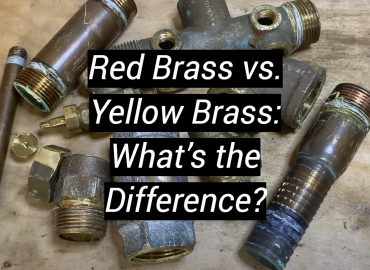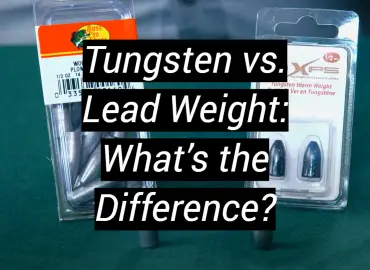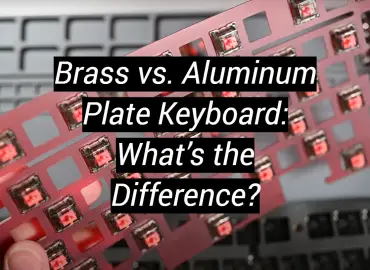When it comes to wedding rings, there are a lot of choices to make. Do you want gold or platinum? Should the ring be plain or have diamonds? One of the most important decisions, however, is what type of metal the ring should be made out of. There are two popular choices: titanium and tungsten. This blog post will compare these two metals and help you decide which one is best for you!
What is Titanium used for?
Titanium is a strong, lightweight metal that has many uses in the modern world. It can be found in aircraft and spacecraft components due to its superior strength-to-weight ratio and its corrosion resistance. In addition, titanium is also used extensively in medical applications, as it is non-toxic and hypoallergenic. It’s also been used for luxury items such as jewelry, sporting equipment, and even eyeglasses frames.

Finally, titanium has made its way into consumer products with its use for cookware, surgical tools, and laptop computers. There are still more potential uses for this versatile metal as research continues into ways of beneficially utilizing its properties [1].
What is Tungsten used for?
Tungsten is a versatile metal with many uses. It is used for manufacturing industrial tools and components, as well as for making jewelry and ornamental items. Tungsten’s high melting point makes it an ideal material for use in arc welding electrodes, rocket engine nozzles, aircraft brakes, and various other specialized applications. Its hardness also makes it a desirable material for drill bits and cutting tools. Additionally, tungsten alloys are often used in radiographic equipment to absorb the x-rays used in medical imaging tests. Finally, pure tungsten has been added to some steel alloys to increase strength or improve particular properties such as corrosion resistance or wear resistance.
Overall, tungsten plays an important role in many industrial and commercial applications. Tungsten also has a variety of non-industrial uses, including jewelry, thanks to its attractive silver-white color. It is commonly alloyed with other metals such as gold or platinum for use in creating fine jewelry such as wedding rings, earrings, and pendants. As it is naturally hypoallergenic and tarnish-resistant, tungsten is an ideal choice for those with metal allergies or sensitivities.
Furthermore, tungsten carbide composite rings are popular due to the durability they offer; they are scratch and breakage resistant, making them a great alternative to traditional precious metals. Tungsten is also used in art projects and decorative items, where it can be shaped into intricate sculptures due to its malleability when heated[2].
Titanium and Tungsten Rings Comparison
Price
Titanium rings are generally more expensive than tungsten rings. Titanium is a natural metal, while tungsten is a man-made composite alloy that includes carbon and nickel. Because titanium is harder to find and more difficult to work with, it naturally costs more than its tungsten counterpart. For instance, a titanium ring that contains 6 grams of metal can cost around $200, while a tungsten ring with the same weight will usually run you only about $100.
Durability
Titanium and tungsten are both known for their impressive levels of durability. Both have very high hardness ratings on the Mohs scale of mineral hardness and they resist scratching, breaking, or denting far better than softer metals like gold or silver.
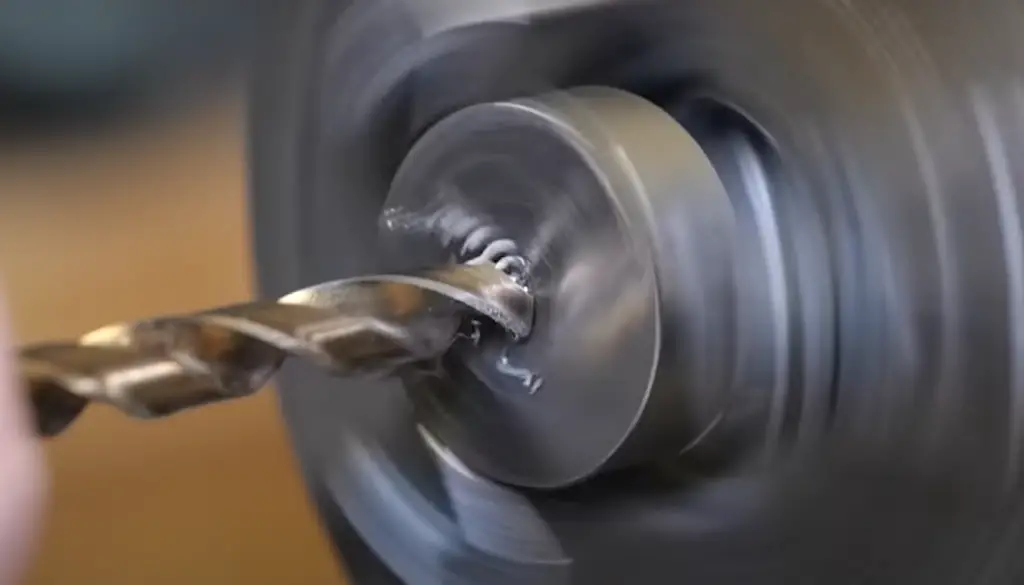
However, when it comes to overall toughness, tungsten is often considered to be more durable than titanium due to its higher density and greater resistance to bending. This makes tungsten an especially good choice for people who work with their hands often or participate in vigorous physical activities.
Composition
Titanium is a natural element found in the Earth’s crust. It has an atomic number of 22 on the periodic table and is composed primarily of titanium dioxide (TiO2) with trace amounts of iron, manganese, and other elements.
This composite material is then hardened through a process called sintering.Appearance
The most obvious difference between titanium and tungsten rings lies in their visual appearance. Titanium tends to have a light grey color that often looks almost white, while tungsten has a darker, gunmetal grey hue. Some people prefer one over the other for aesthetic reasons, while others may have a hard time telling the two metals apart.
Hardness
Both titanium and tungsten are incredibly hard metals, but tungsten is typically considered to be the harder of the two. Tungsten ranks an 8 on the Mohs scale of mineral hardness (where diamonds rank a 10), while titanium ranks around 6-6.5 on the same scale. This means that tungsten rings are more resistant to scratching or denting than their titanium counterparts.
Scratch-resistance
Tungsten and titanium rings are both incredibly scratch-resistant, but tungsten is generally considered to be the more durable of the two metals. Tungsten’s higher density makes it harder to bend or dent, while titanium’s lower hardness rating means that it is more likely to show signs of wear over time.
Weight
Titanium and tungsten rings vary in weight depending on their design and size, but generally speaking, tungsten rings tend to be heavier than titanium rings. This is because tungsten has a higher density than titanium, which means that an equal-sized ring made from the two metals will weigh differently.
Crack-resistance
Tungsten and titanium are both very crack-resistant metals, but tungsten wins out in this regard due to its superior hardness rating. Tungsten is more difficult to bend or dent than titanium, which makes it an excellent choice for people who work with their hands often or participate in vigorous physical activities.
Color
Titanium and tungsten rings come in a variety of colors, but titanium is generally the better metal for achieving brighter, more vibrant hues.
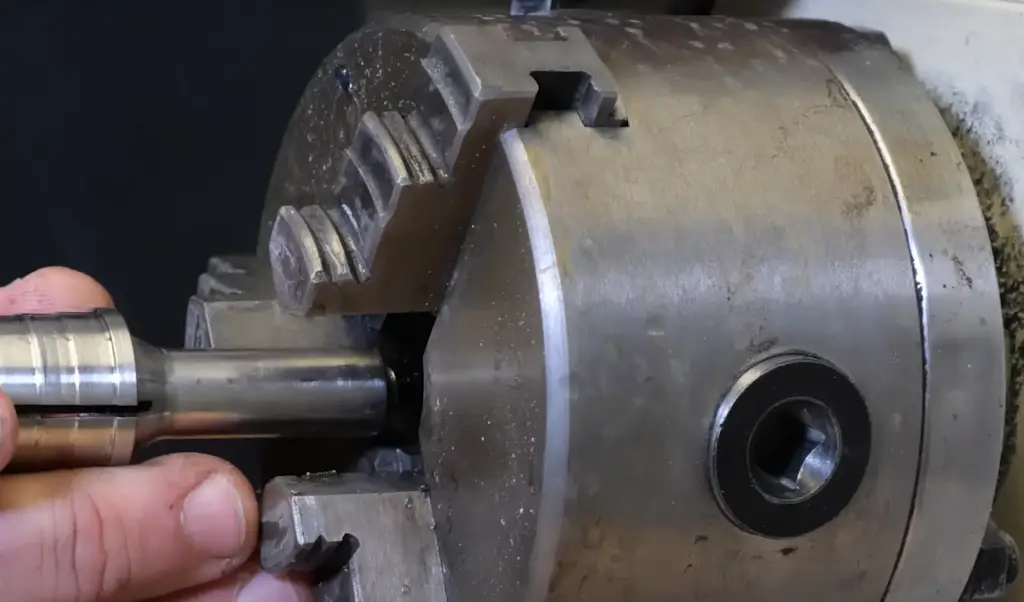
This is because titanium has some natural light-reflecting properties that can add an extra sparkle to a ring’s design. Tungsten, on the other hand, tends to have a darker grey hue that may not be as visually appealing for some people.
Hypoallergenic properties
Titanium and tungsten are both hypoallergenic metals, which means that they are safe for people with sensitive skin. Titanium is naturally occurring and does not contain any allergens or toxins, while tungsten is a composite material made from carbon and nickel. Both metals are free of lead, nickel, or cobalt, making them suitable for anyone with metal allergies.
Emergency removal
In the event of an emergency, it may be necessary to quickly remove a metal ring from someone’s finger. In this case, titanium is generally considered the better choice as it can be safely cut off with a pair of standard wire cutters. Tungsten, on the other hand, is much harder and requires special tools for removal.
Resizing
Titanium and tungsten rings can both be resized by a professional jeweler, but tungsten is much harder to work with. This is because titanium is softer than tungsten and thus more malleable, making it easier for a jeweler to adjust the size of the ring without damaging it.
Design potential
Titanium and tungsten rings both offer a variety of design potential, but titanium is the better choice for intricate details. This is because it’s softer than tungsten and easier to manipulate into detailed shapes. Tungsten, on the other hand, does not offer as much flexibility when it comes to designs and is best reserved for simpler styles.
Lifespan
Both titanium and tungsten are incredibly durable metals, but tungsten rings tend to last longer due to their higher hardness rating. Titanium is softer than tungsten and therefore more prone to scratches and dents over time. Tungsten, however, is resistant to wear and tear and can last a lifetime with proper care [3].
How to maintain Titanium and Tungsten Rings?
Titanium and tungsten rings require a bit of maintenance to ensure they look their best. Here are a few tips for keeping your titanium and tungsten rings looking great:
- Clean your ring regularly using warm, soapy water and a soft cloth or brush. This will remove any dirt or oils that have built up on the metal surface of the ring.
- Avoid extreme temperatures as they can cause damage to the metal, resulting in cracks or discoloration.
- Avoid harsh chemicals such as chlorine, bleach, and abrasive cleaners which can also damage the metal finish of your ring over time.
- Store your ring separately from other jewelry items to avoid scratching or damage.
- Have your titanium or tungsten rings professionally polished once a year to keep them looking their best and prevent oxidation and discoloration.
- Be sure to remove your ring when doing any strenuous activities such as gardening, painting, or working out at the gym to avoid scratches or damage to the metal surface of your ring.
Following these simple tips will help ensure that you enjoy your titanium or tungsten ring for many years to come!
Engraving Titanium and Tungsten Rings
Titanium and tungsten rings are the perfect choices for those who want a unique piece of jewelry. They are not only beautiful but also durable, making them an ideal option for couples looking to commemorate their special day. Titanium and tungsten rings can be engraved with a variety of symbols, initials, or even a personalized message. Engraving is one way to make these rings truly unique, creating a lasting memory that will last a lifetime!
The process of engraving titanium and tungsten rings is very simple. The ring must first be cleaned using either warm water or rubbing alcohol, then buffed until it has a smooth surface. Once the ring has been prepared, it’s ready to be engraved. Typically, a rotary engraver is used to etch the desired design or message into the ring. The engraving can be as intricate or simple as you’d like, and it’s also possible to add color with paint or inlays.

Once the engraving is complete, it’s important to care for your titanium and tungsten rings properly so they remain beautiful for years to come. Cleaning the rings regularly with warm water and mild soap will help keep them looking new. Avoid harsh chemicals or abrasive materials when cleaning, as these could damage the engraved design.
FAQ
Which is more expensive, titanium or tungsten ring?
Titanium rings tend to be more expensive than tungsten rings. While both metals are durable and hard-wearing, titanium is lighter in weight and typically more complex to craft, so it will cost you a bit more. Tungsten, on the other hand, is relatively heavy and inexpensive to work with, making it a common choice for affordable wedding bands. Additionally, titanium can come in a variety of colors while tungsten usually only comes in grey or black shades. Ultimately, it’s up to you which metal you choose based on your budget and personal preference.
Why are tungsten rings better?
Tungsten rings are popular for a variety of reasons. They are known to be significantly stronger and more scratch-resistant than other types of metal, which makes them ideal for everyday wear. Additionally, tungsten is also hypoallergenic so it’s suitable for those with sensitive skin. Finally, tungsten is extremely durable and can last a lifetime if taken care of properly. Therefore, if you’re looking for an affordable yet long-lasting wedding band, a tungsten ring might be the perfect choice for you.
Can I resize my titanium ring?
Yes, it is possible to resize some titanium rings depending on the design and craftsmanship of the ring. However, resizing titanium rings can be tricky due to the hardness of the metal, so it is best left to a professional jeweler. Furthermore, titanium rings can also be custom-made to fit your finger perfectly and avoid any sizing issues down the line.
Are tungsten rings good for everyday wear?
Yes, tungsten rings are an excellent choice for everyday wear. Not only are they incredibly scratch-resistant but they are also very durable and long-lasting due to their low coefficient of friction. Additionally, tungsten is hypoallergenic which makes it suitable even for those with sensitive skin. Therefore, if you’re looking for an affordable yet stylish wedding band that won’t easily get damaged or tarnished over time, consider investing in a tungsten ring.
Which is the shinier tungsten or titanium ring?
Titanium rings typically have a shinier finish than tungsten rings. This is because titanium can come in a variety of colors and shades, which makes it more aesthetically pleasing for some people. Additionally, titanium has a higher polished luster than tungsten due to its lighter weight and malleability.
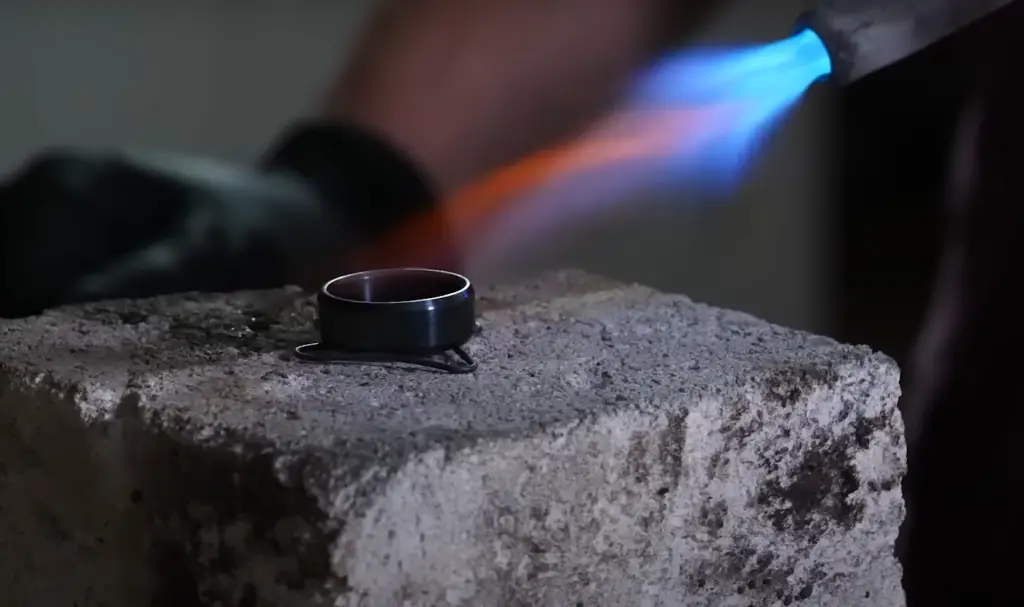
On the other hand, tungsten usually only comes in grey or black shades which may not be as shiny compared to titanium. Ultimately, it’s up to you which metal you choose based on your personal preference and budget.
Are titanium rings durable?
Yes, titanium rings are extremely durable and long-lasting despite their lightweight nature. Titanium is resistant to scratches and tarnishing, making it an ideal choice for everyday wear. Additionally, titanium is also hypoallergenic and corrosion-resistant which makes it suitable even for those with sensitive skin. Therefore, if you’re looking for a durable yet stylish wedding band, a titanium ring might be the perfect choice for you.
Are tungsten rings good for engagement rings?
Yes, tungsten rings are becoming increasingly popular as engagement rings due to their durability and affordability. Tungsten is incredibly strong and scratch-resistant, making it an ideal choice for everyday wear. Additionally, tungsten is also hypoallergenic so it’s suitable even for those with sensitive skin. Furthermore, tungsten has a relatively low coefficient of friction so it won’t easily get damaged or tarnished over time.
Do titanium rings scratch easily?
No, titanium rings are quite scratch-resistant. This is due to the hardness of the metal which makes it more durable compared to other types of jewelry materials. Additionally, titanium is also hypoallergenic and corrosion-resistant which makes it suitable even for those with sensitive skin.
Can tungsten rings shatter?
No, tungsten rings will not shatter because they are made from an extremely hard and dense metal that can tolerate a considerable amount of force before it breaks or bends. However, it’s important to note that tungsten can still crack under extreme pressure or temperatures so it’s best to take off the ring when engaging in activities that may put it at risk of breaking. Furthermore, tungsten rings should also be stored in a cool, dry place to ensure maximum longevity.
Will a titanium ring turn your finger green?
No, a titanium ring will not turn your finger green. Titanium is hypoallergenic and corrosion-resistant so it won’t cause any skin discoloration or irritation. Furthermore, titanium rings are also scratch-resistant and long-lasting due to their lightweight nature which makes them an ideal choice for everyday wear.
How can I design a titanium ring?
If you’re looking to design a titanium ring, there are many different options available. You can choose from a variety of styles, colors, and finishes to create the perfect piece for yourself or as a gift. Additionally, many online retailers offer custom engraving services so you can add personal touches such as names or dates onto your ring. Ultimately, the possibilities are endless when it comes to designing your own titanium ring!
Does tungsten dent easily?
No, tungsten is extremely strong and dense which makes it highly resistant to dents and scratches. Therefore, if you’re looking for an affordable yet stylish wedding band that won’t easily get damaged over time, tungsten might be the perfect choice for you.
Are titanium and tungsten rings easy to resize?
Titanium and tungsten rings may be durable, but they do not allow for any wiggle room when it comes to resizing! Because these metals are too hard to stretch or meltdown, if your ring is off the mark in size then you’ll need a replacement.
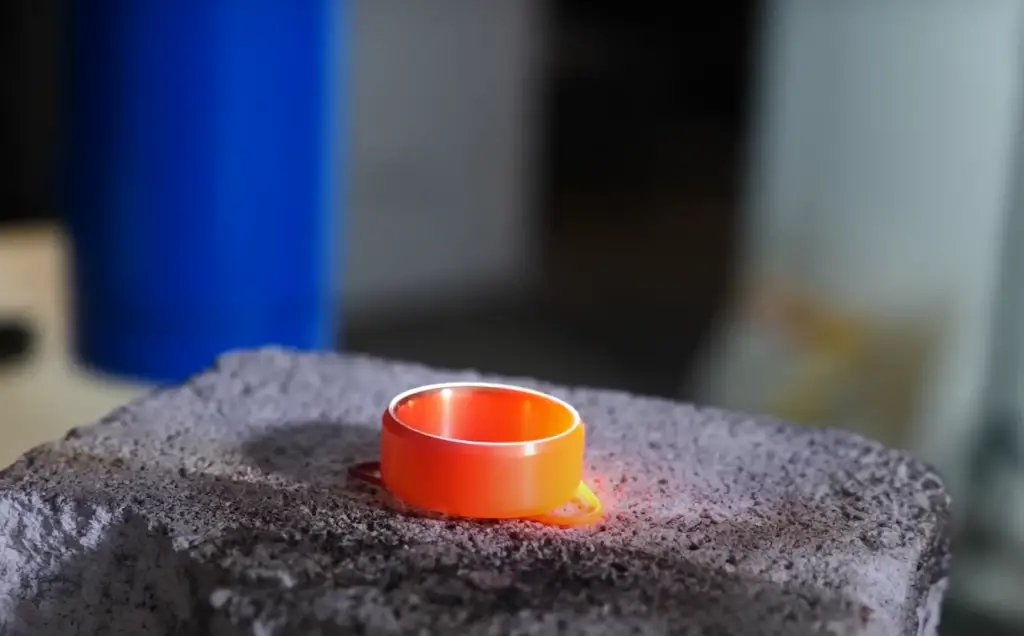
To avoid this potential hassle shopping headache, take great care with accurately measuring before making that special purchase – so you can make sure your metal band fits perfectly from first use onwards.
Why not get a titanium ring?
Titanium rings are becoming increasingly popular due to their durability and affordability. They are scratch-resistant, hypoallergenic, and corrosion-resistant which makes them suitable even for those with sensitive skin. Additionally, titanium is lightweight and comes in a variety of styles, colors, and finishes so you can find the perfect piece that fits your style. Finally, titanium is also an ideal choice if you’re looking for a durable yet stylish wedding band that won’t easily get damaged or tarnished over time. Overall, titanium rings offer many benefits that make them the perfect choice for any occasion! The only downside to titanium rings is that they cannot be resized as it is too hard to reshape the metal. So make sure you accurately measure for the perfect fit before making your purchase.
What color can a titanium ring be?
Titanium rings come in a variety of colors, from traditional silver and grey to more modern hues such as rose gold and black. Additionally, you can also find titanium with intricate designs or patterns as well as unique finishes like brushed or polished. Ultimately, there are endless possibilities when it comes to choosing the perfect color for your titanium ring! So no matter what look you’re going for, you’ll be sure to find something that suits your style perfectly.
Useful Video: Titanium vs Tungsten Rings | Compared | Titanium vs Tungsten Rings Pros And Cons
Conclusion
If you are deciding what ring to buy for the special someone in your life, there are many factors to consider. You should think about the recipient’s style preferences, budget, and even metal type. Consider Titanium rings and Tungsten rings as alternatives to traditional gold or silver. Titanium and Tungsten rings are stronger, more durable, and can even be customized to reflect the recipient’s unique style. Ultimately, the perfect ring will come down to personal preference and taste. You can’t go wrong with a ring made of Titanium or Tungsten!
References:
- https://www.refractorymetal.org/uses-of-titanium/
- https://techiescientist.com/uses-of-tungsten/
- https://www.justmensrings.com/titanium-vs-tungsten-comparison

